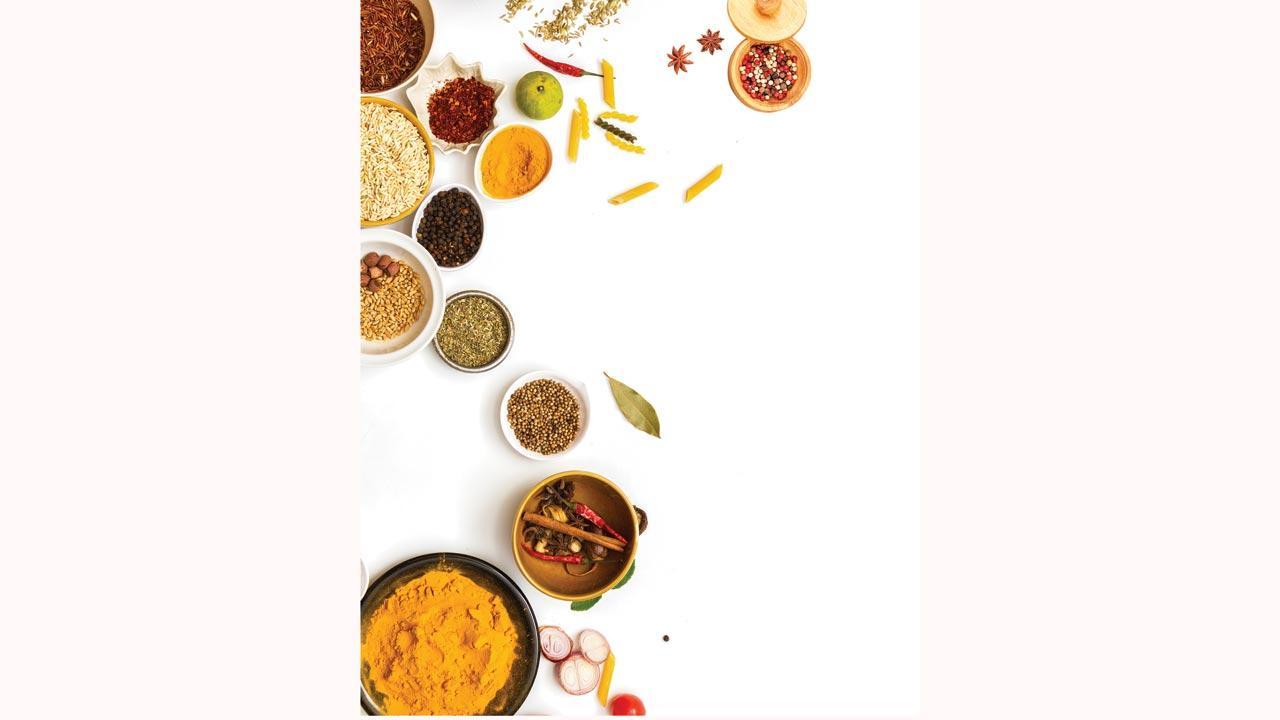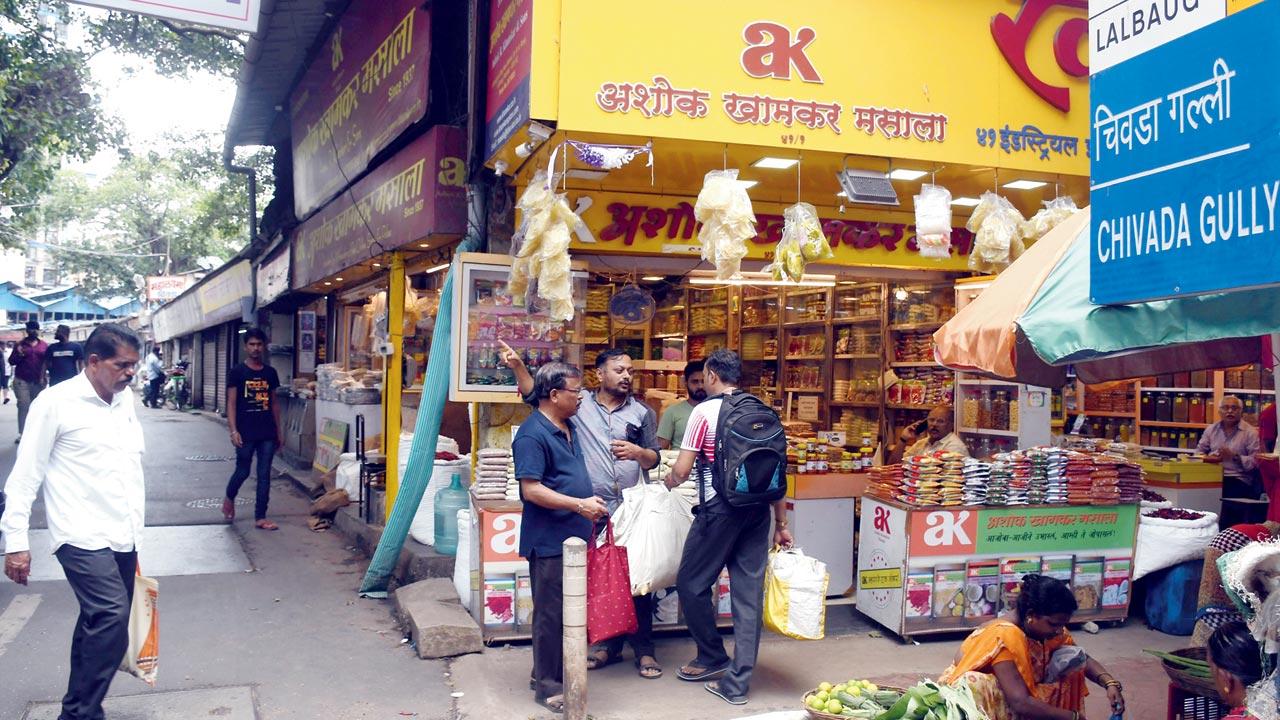Recently, after two top masala brands were pulled up for adulteration, ICMR suggested that Indian households should use whole spices. A food researcher and a top chef discuss these countermeasures and how to eat safely. Plus, a list to get your masala fix from

Pic/iStock
The arrival of readymade masala mixes was considered to be the next step in the Indian culinary process, speeding it up for working-class families across Indian cities. In April 2024, Singapore and Hong Kong flagged two popular Indian masala brands for adulterated content. Subsequently, raids by the Food Safety and Standards Authority of India (FSSAI) have unearthed large scale adulteration in Delhi and Hyderabad. For homemakers and chefs, it is a hammer blow to the one ingredient the Indian kitchen cannot do without — the powdered masala. To combat this, the ICMR (Indian Council of Medical Research) recently suggested buying whole spices rather than powdered mixes to avoid adulterants.
ADVERTISEMENT
 Customers shop for spices at Ashok Khamkar’s store near Chivda Gully in Lalbaug. File pics
Customers shop for spices at Ashok Khamkar’s store near Chivda Gully in Lalbaug. File pics
Manish Mehrotra, culinary director, Indian Accent tells us, “Traditional masalas were always part of Indian cuisine. But it is never one or two spices. Indian cuisine works on spice blends. Different varieties of blends are required according to cuisine from different parts of India.” For Maharashtra alone, the chef outlines the goda masala, Kolhapuri masala and Malvani masala. “There is also the chaat masala, buknu masala and others across regions,” he points out.

Despite the concerns, it is impossible for Indian cooks to avoid using masalas. Mehrotra remarks, “The right blend of spice, and its quantity, lends identity to Indian cuisine. Each blend is unique, and the way in which Indians use it to create balance, flavour and aroma makes the
dish interesting.”
While the readymade masala has been taken for granted, its role and importance mean the Indian customer needs to be more careful when making the purchase. “FSSAI and other authorities are working hard, but it is impossible to end it completely. It falls upon the consumer to be more aware and proactive,” says Ashwin Bhadri, CEO of Equinox Labs, an FSSAI-approved pan India food testing laboratory. While it is impossible to eliminate adulteration completely — even in the purchase of whole spices from spice markets, he says — the rise of campaigns for awareness like #LabelPadhegaIndia is starting to have an effect, he points out.
 Manish Mehrotra
Manish Mehrotra
On the other hand, the risks of ignorance are multiple. Bhadri notes that the dangers of consuming food made from poor or adulterated spices can be something as simple as a tummy ache to food poisoning or even fatal issues.
Detection can sometimes be simple using traditional methods. As a restaurateur, Mehrotra shares how he has cultivated trusted resources and spice merchants for over three decades. Know your masalas, he says, adding, “The fragrance of a masala is an indicator of its freshness, then comes the colour and feel of the spice. Buying from a trusted resource also ensures that you have access to the freshest supplies. As restaurateurs, we build relationships with spice merchants. I have a family from Kolhapur who have made our buknu masala for us for over 35 years.”

Where such access is difficult, Bhadri suggests using the FSSAI recommended Detect Adulteration with Rapid Test (DART). “There is a detailed PDF available on the FSSAI website (fssai.gov.in) that outlines simple methods using home materials to check for adulteration. You may not be able to check for advanced pesticides, but can discover basic adulterants such as sawdust, poor quality or other seeds in your spices,” he says. When buying from wholesale markets, he also emphasises on the importance of buying from trusted sources.
As for quick fixes, Mehrotra says, “There is no fix in Indian cuisine for when you get the masala wrong. The balance, and quality of masala will show through in your food. It takes years of experience to get the balance, identification and flavour of the masalas right. It is a skill developed over years of practice.” Foodies across India might just need to up their skill levels now.

Check list
. Fragrance of a spice denotes its freshness.
. The touch and feel of a spice’s texture is a good way to identify if it is good for use.
. Always choose to buy from a trusted source and known spice merchant.
Spice factor
. Sanjeevani Masala store (for Maharashtrian masalas)
AT P Balu Marg, Prabhadevi.
CALL 24318906
. Damji Manji Dry Fruit and Kirana
AT Bara Imam Road, Null Bazar, Bhuleshwar.
CALL 9820487100
. GW Khamkar Masala (for goda masala)
AT Shop 3, Lalbaug Market, Parel.
LOG ON TO gwkhamkar.com
. Shiv Sai Mangalore General Stores (for Mangalorean masalas)
AT Shop 57, Grand Square, Ghodbunder Road, Thane West.
CALL 9082143357
. Sarvodaya’s (for goda masala)
AT 356, Ranade Road, Dadar West.
CALL 9775717171
. East Indian Cozinha (bottle masala)
CALL 9987869691
. Cray Cray Foods (East Indian bottle masala)
CALL 989261866
 Subscribe today by clicking the link and stay updated with the latest news!" Click here!
Subscribe today by clicking the link and stay updated with the latest news!" Click here!







